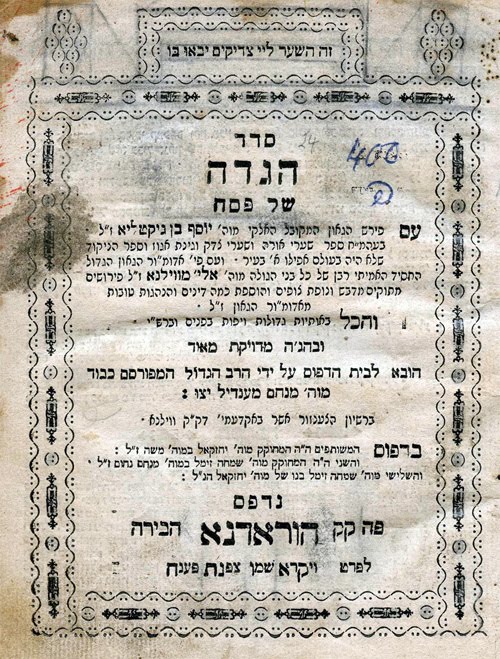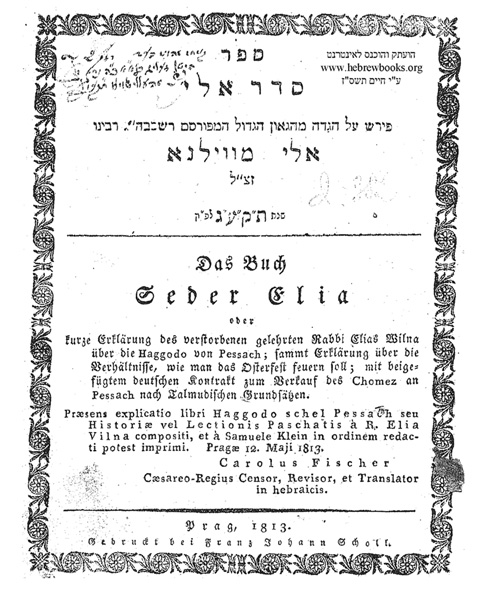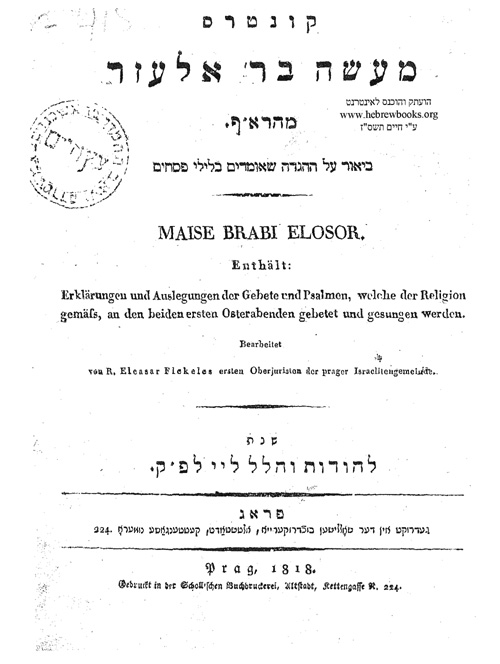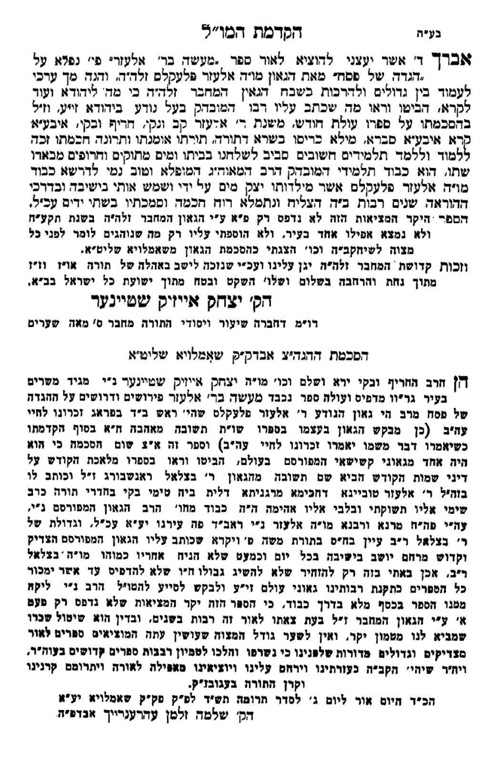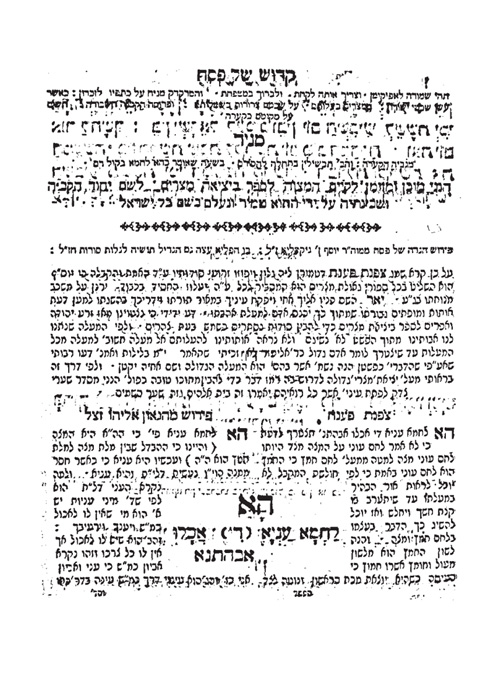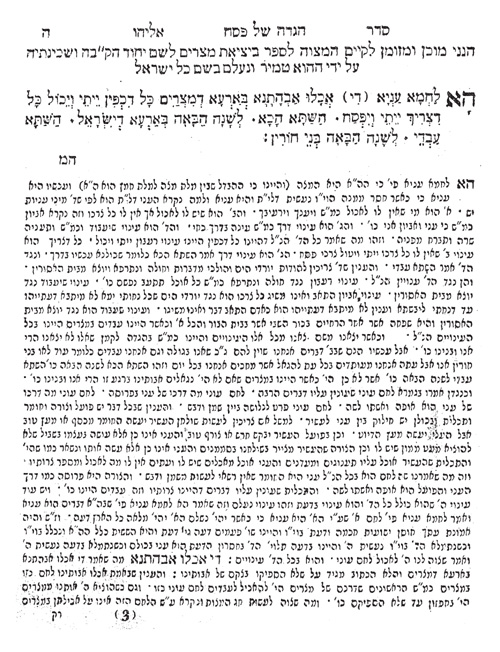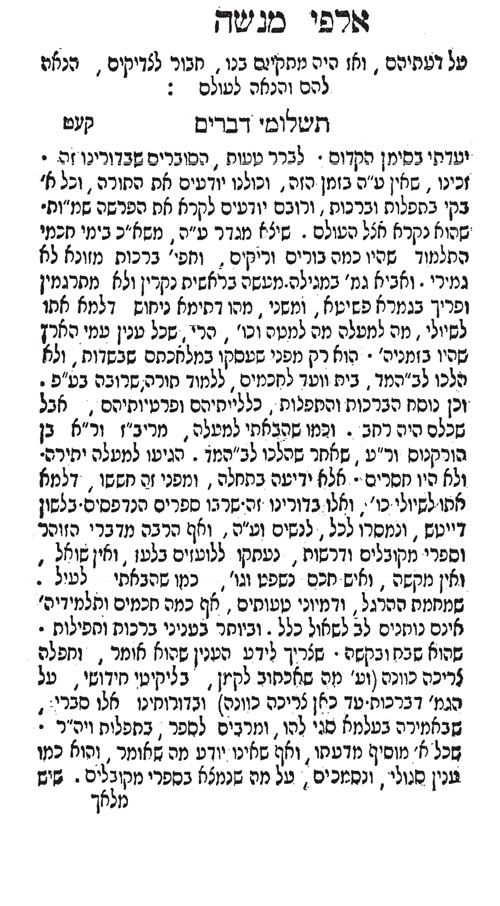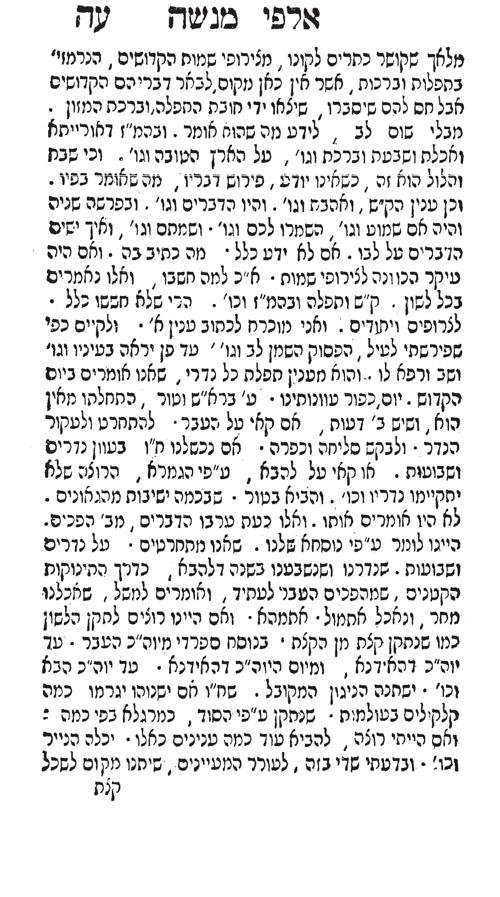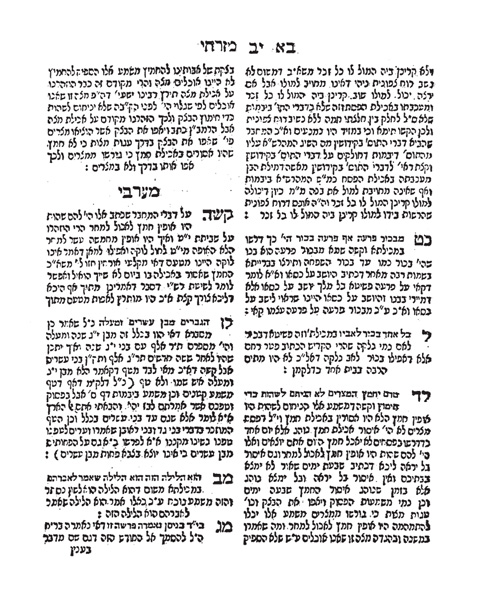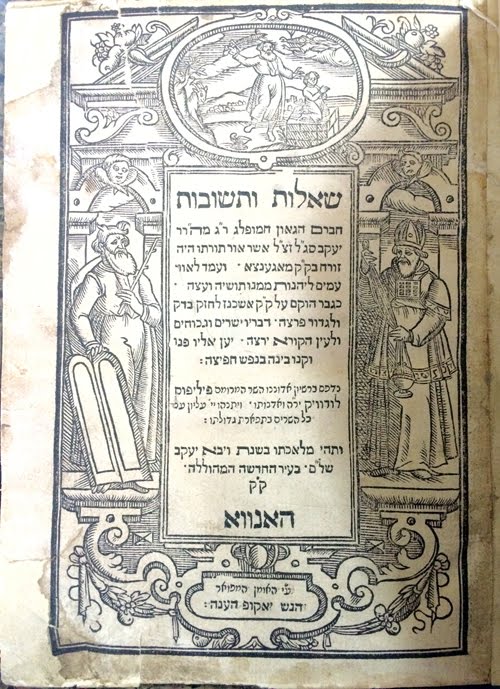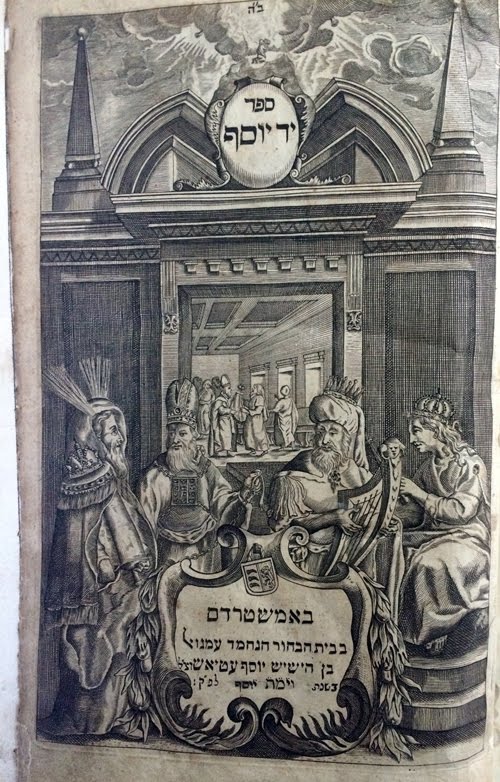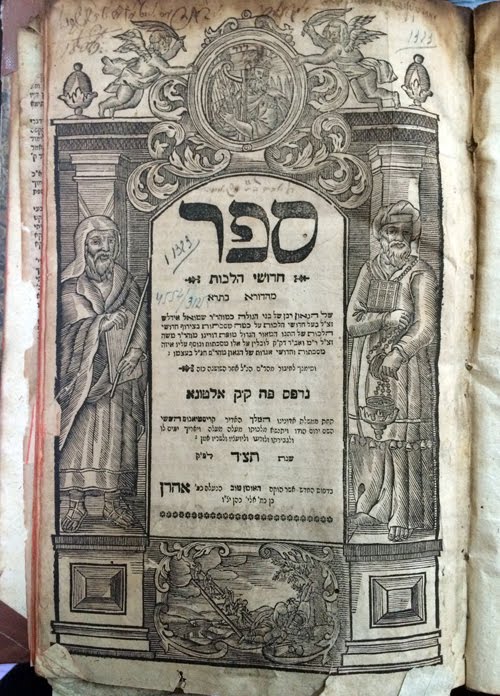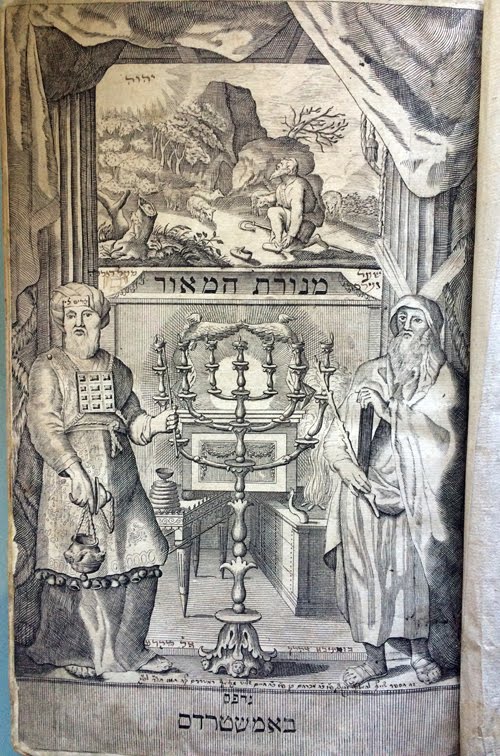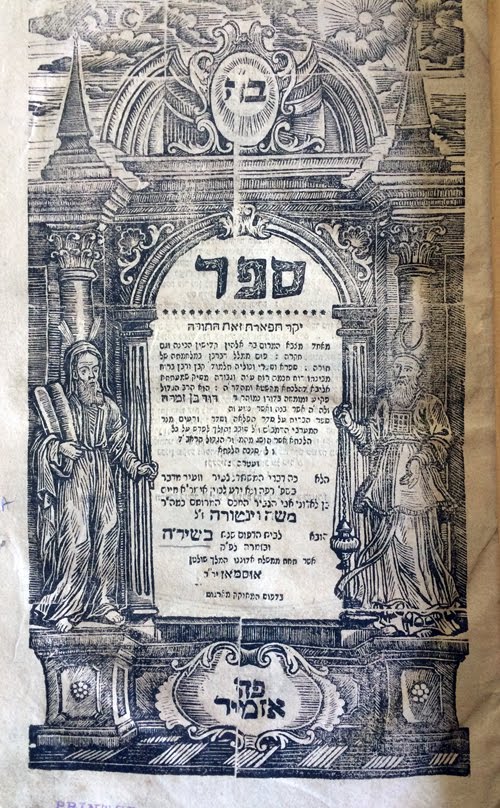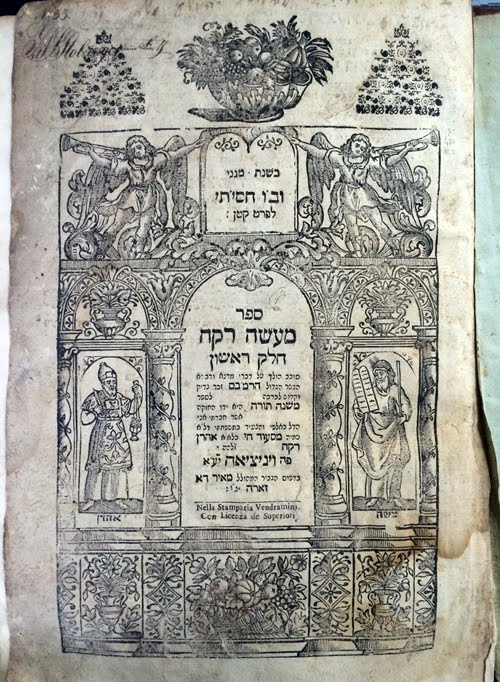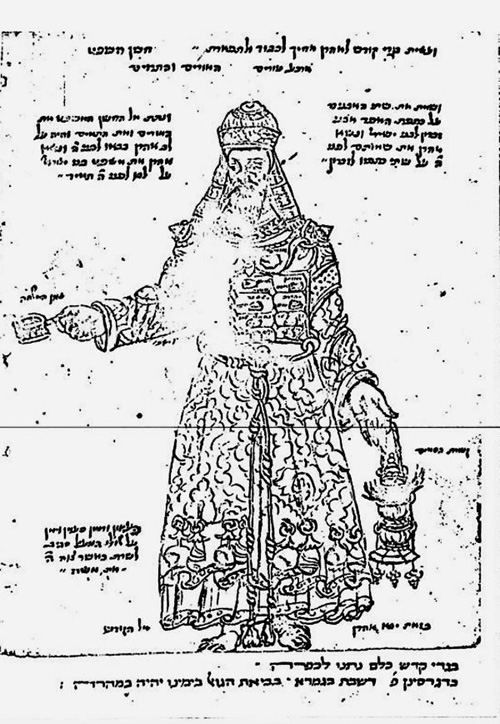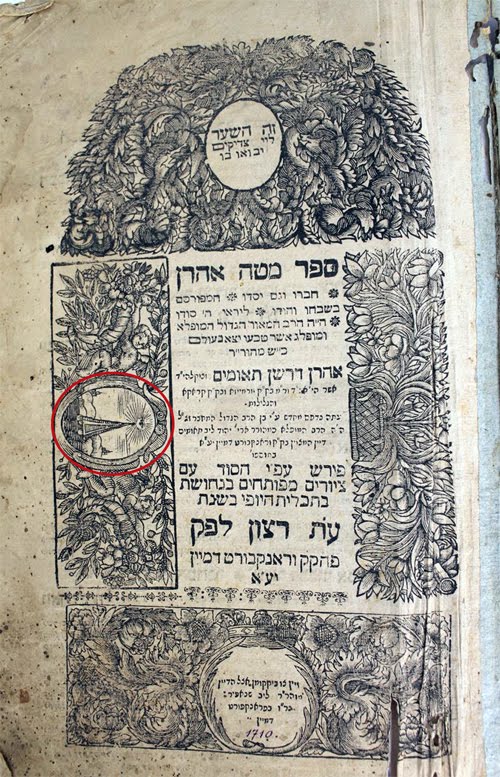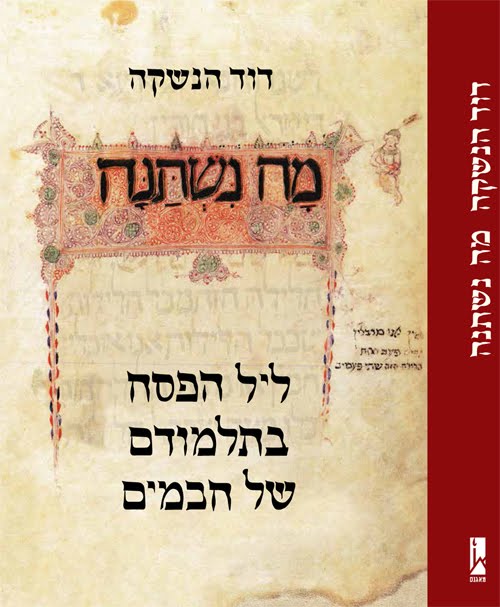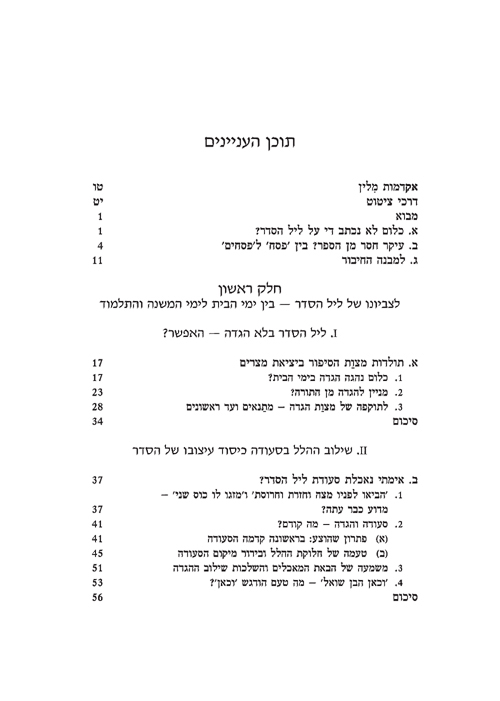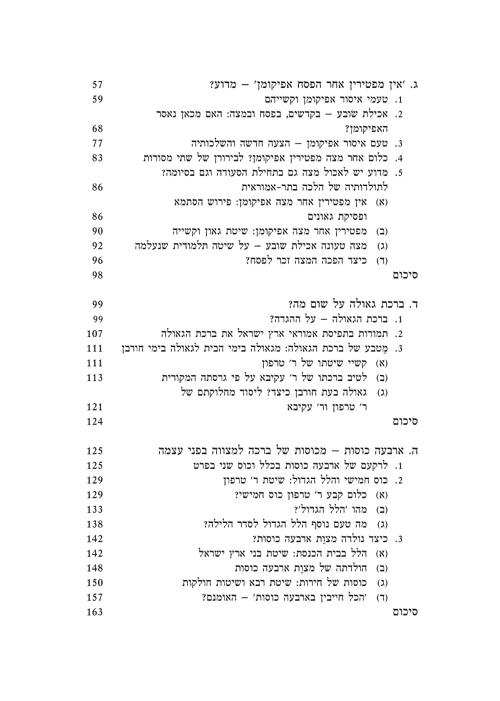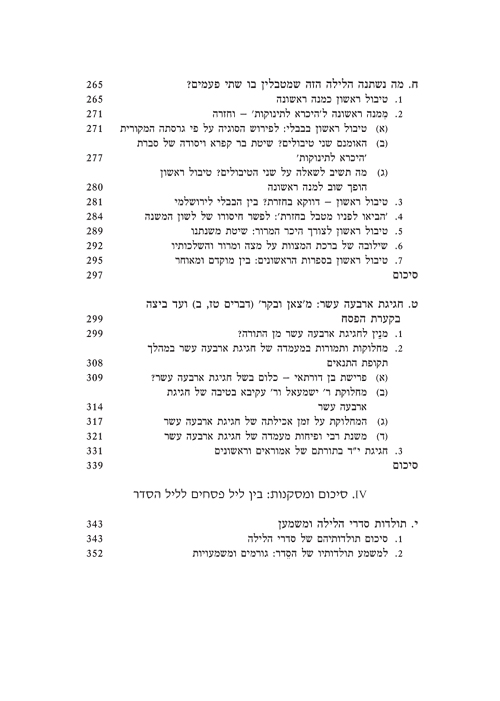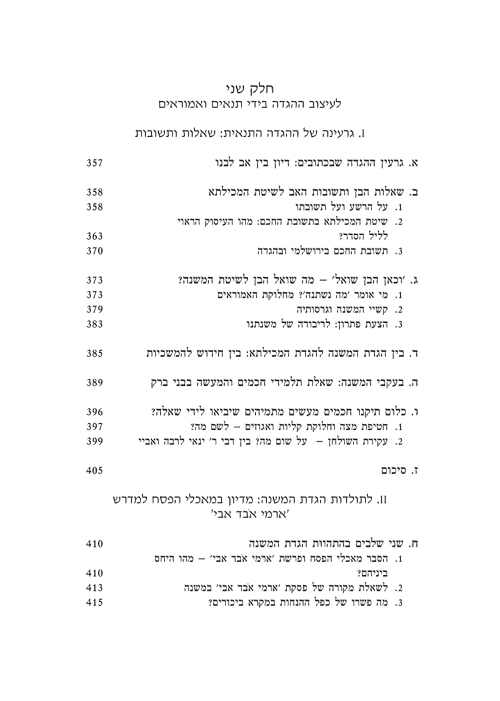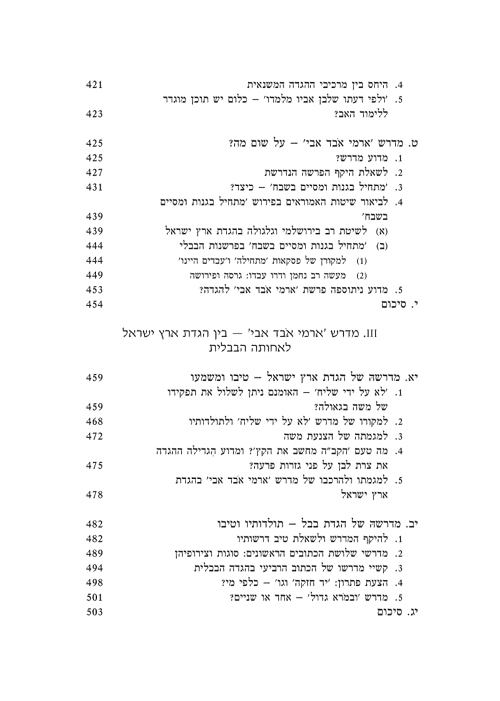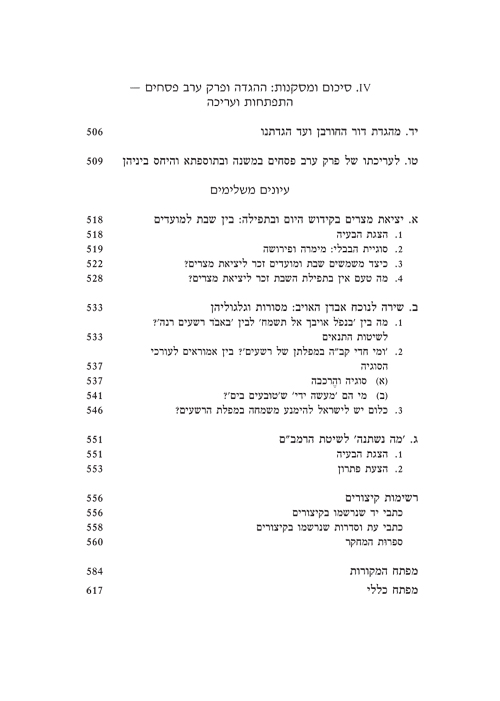The Yom Tov Lecture of R. Eliezer
Hagadol
By Chaim Katz, Montreal
Our
Rabbis taught in a
baraita: R. Eliezer was sitting and lecturing about
the laws of the festivals the entire day. A first group left and he said: these
people own pithoi (huge storage containers).
A second group left and he said: these people own amphorae (smaller
storage containers). A third group left
. .
. A forth group left . . . A fifth group . . . When a sixth group started to leave. . . He
looked towards his students and their faces turned white. He said: “my children, I wasn’t speaking to you, but to
those who left, who abandon eternal life and busy themselves with mundane life.”
When the students were dismissed he said to them: “Go, eat delicacies, and
drink sweet drinks . . . for today is a holy day . . .”
The
baraita has: “who abandon eternal life and busy themselves with mundane
life”. But isn’t the joy of the
festival a mitzva? Rabbi Eliezer’s opinion is that joy of the festival
is a reshut as was taught: Rabbi Eliezer says: A person on Yom Tov has
no way except to eat and drink or to sit and study [Torah]. R. Yehoshua says: divide [the time], half for
eating and drinking and half for the study hall. (Betza 15b) [1]
To
summarize: 1) R. Eliezer was critical of
those who walked out during his lecture. 2) R. Eliezer’s criticism is in
agreement with his opinion that eating on the festival is not a mitzvah. 3)
However, he believes that eating is valid on a holiday and is equivalent to study
on a holiday. 4) R. Eliezer encourages
his students to eat delicacies and drink sweet beverages after the lecture has
ended.
Something
doesn’t seem right.
In his book on R. Eliezer ben Hyrcanus ,
Professor Yitzhak D Gilat, writes:
From R. Eliezer’s reaction to the groups
leaving the study-room, it appears that the alternative of eating and drinking
is merely a hypothetical one . . . In
practice he disapproves of it. [2]
I think there
is another way to reconcile the different aspects of the story but first some
background:
The
definition of a derasha (the term for R. Eliezer’s lecture) is a talk
(usually related to the current Sabbath or holiday) that was delivered to the
general public. It had a standard form, and was delivered at a specific time.
[3]
An
eye-witness description of a derasha from the time of the Gaonim
exists: [4]
The
head of the yeshiva of Sura opens the lecture (with a verse) and the meturgaman
stands near to him and proclaims his words to the people. When the head of the yeshiva
lectures, he lectures with awe. He closes his eyes and wraps himself in his tallit,
even his forehead is covered. While he lectures, no one in the congregation
makes a sound or says a word. If he senses that someone in the audience is
speaking, he opens his eyes and a dread of trembling falls upon the entire
congregation…
The derasha was delivered either at
night (the eve of yontov), or in the morning (after the Torah Reading)
or during the afternoon [5].
R. Eliezer probably did not lecture the
entire day, [דורש
כל
היום
כולו]. He probably lectured for only part of
the day. Parallels prove this point:
1. They said about R. Yohanan ben Zakai that
he was sitting in the shade of the Temple sanctuary lecturing the entire day. (Pesahim 26a)
דתניא אמרו עליו על רבן יוחנן בן זכאי שהיה יושב בצילו של
היכל ודורש כל היום כולו
R.
Yohanan b Zakai couldn’t have sat in the shade all day unless he started on the
west of the heichal and later moved himself (and the audience) to the
eastern side of the heichal. It’s likely that his derasha took
place in the afternoon, when shadows extend towards the east. [6]
2. They
immediately sat him [Hillel] at the head and appointed him nassi over them
[the Sanhedrin]. He lectured the entire day on the laws of Passover. (Pesahim
66a)
מיד הושיבוהו בראש ומינוהו נשיא עליהם. והיה דורש כל היום
כולו בהלכות הפסח
As
the Gemarah describes, they first searched for someone who could tell
them what to do when the eve of Passover falls on the Sabbath. They found
Hillel. They interviewed him. He presented his arguments, but his reasoning was
rejected. He argued a different way and his reasoning and halakha were accepted.
They offered him the leadership of the Sanhedrin and he accepted. They gathered
the people and he gave the derasha. All that must have taken some time,
which leads to the conclusion that he also lectured during the second part of
the day.
To summarize:
1) The people who attended the derasha were mainly regular shul-goers –
members of the community.
2) Although R. Eliezer’s disciples where also present, the people who left the
lecture before it ended were the regular shul-goers. [7]
3) R. Eliezer’s lecture took up only part of the day. Based on the expressionדורש כל היום כולו , the derasha probably took place in the latter part of the afternoon, (like
the derashot of his teacher and his teacher’s teacher).
4)
Therefore, we can conclude that R. Eliezer expected his
congregants to eat a yomtov meal and they most probably already did so
before the derasha started. He holds that you can observe the holiday either
by eating or by learning Torah – but neither of these activities has to last the
entire day.
The
climax of the story, the phrase “they abandon eternal life and busy themselves
with mundane life”, also needs to be explained. The sentence is used a number
of times in the Talmud, but it has a bit of a different meaning each time it’s
used. The primary sense is in Taanit 21a: Ilfa and R. Yohanan decide to leave
the beit-ha midrash in search of a more financially secure lifestyle. At
the start of their journey, an angel is heard saying, they are “abandoning
eternal life and occupying themselves with mundane.”
However, in our story
the simple straightforward meaning doesn’t fit. How
were the congregants abandoning eternal life by leaving the lecture early? They certainly heard more Torah on this day
than they heard on a regular work day. And why were they more engaged in the
mundane today while eating a holiday meal compared to when they eat a normal week-day
meal on any other day? [8]
Which
leads to another point – we aren’t very
familiar with R. Eliezer and his halakhic opinions. We
know he had an affinity for Beit Shammai (and was maybe the last of the Beit
Shammai) and we know that the sages and most of his own disciples distanced
themselves from him and his teachings were not preserved. [9]
R.
Shaul Lieberman in his commentary to the Tosefta of Berakhot, tells us
something about R. Eliezer that I believe is the key to understanding our
story.
We
read in the Tosefta (Berakhot 4:1):
לא ישתמש אדם בפניו ידיו ורגליו אלא לכבוד קונהו שנא’
(משלי טז)
כל פעל ה’ למענהו
One
should not use his face hands or feet but in honor of his Maker as it says:
Everything G-d creates, He creates for its specific purpose. (Proverbs 16:4)
Professor
Lieberman explains: [10]
לפי פשוטו משמעו שלא ישתמש אדם בהם להנאתו גרידא אלא לכבוד שמים ואם הוא עושה כן הרי כבוד שמים מתירן לו בהנאה.
A
person is not to act solely for his own pleasure but is to act for the honor of
heaven. When he acts this way, his intention for the sake of heaven grants him a
license to enjoy the pleasure.
R.
Lieberman continues and demonstrates that this is the position of Hillel.
However Shammai has a different approach; Shammai regards physical pleasure as
something to be accepted only grudgingly or maybe even involuntarily:
Everything
you do should be for the sake of Heaven, like Hillel. . . .
“Where are you going Hillel”, “I’m going to do a mitzvah.” “What mitzvah
Hillel?” “I’m going to the bath-house.” “Is that a mitzvah”, “Yes . . . ”
But
Shammai wouldn’t say that, rather he would say “let us fulfill our obligation
to this body of ours.” [11]
Prof.
Lieberman points out that R. Eliezer follows and practices the teaching of
Shammai. [12]
Returning
now to our story: R.
Eliezer however, views the yontov food like ordinary week-day food, i.e.
שמחת יום טוב רשות,
and being an ordinary meal, the physical pleasure of the food or drink cannot be
fully enjoyed. [13]
R. Eliezer expects his community to follow
his own rulings and practices. [14] He suspects that the groups who left before the lecture concluded
were returning home to drink wine and enjoy tasty food for the physical
pleasure of eating and drinking. They were abandoning eternal life – the life of eating purely without
thinking of the physical pleasure and were engaged in the temporal life of
self-indulgence. [15]
Yet, R. Eliezer could still be conciliatory
to his students and encourage them to eat and drink delicacies in honor of the
holiday because he knew they would eat their food in a befitting way and live
up to his teaching and principals.
I believe it’s possible to clarify the
positions of R. Eliezer based on writings of Maimonides. [16] Starting with Sefer
Ha Mitzvot:
ואחרי עיניכם – זו זנות שנאמר: ויאמר שמשון
אל אביו וגו’ (שופטים יד, ג (הכוונה באמרם זו זנות רדיפת התענוגות והתאות הגופניות
והעסקת המחשבה בהן תמיד.
The Sifre interprets . . . don’t follow after your eyes (Numbers
15:39) this refers to promiscuity (zenut) . . . including the pursuit of pleasure and pursuit
of physical gratification as well as the constant wishful thinking about them.
[17]
In the Guide, Maimonides expands this
point. [18]
There are some – a partition separates
between them and G-d, the collection of dimwits, who suppress their faculty of
thinking about ideas, who pursue only the sensory feeling which is our greatest
disgrace – the sense of touch. They have no thought or notion except for
thoughts of eating, sex and nothing else . . .
In contrast, the ideal person whom everyone should emulate fits the
following profile [19]
[people] for whom all compulsory
materialness is humiliating and disgraceful; a flaw which is forced upon them, especially the
sense of touch, which is humiliating to us as Aristotle wrote, that moves us to
desire eating, drinking and sexual acts, which must be minimized as much as
possible. One must be discreet and pained when engaged in it, not make it the
subject of our speech, not talk about it freely, not sit in assemblies for
these purposes but rather control of all of these needs and reduce them to the
essential minimum as much as we can.
R. Eliezer follows this ideal. I would
argue this is not asceticism. R. Eliezer is doing the same things that everyone
else does. His feelings are different (and that affects his behavior somewhat),
but his feelings follow from his understanding of the Torah’s instruction: לא תתורו,
and by definition, carrying out the rules
of the Torah is not called asceticism.
In the 5th chapter of the
introduction to his commentary on Abot, Maimonides speaks about dedicating
one’s actions for the sake of heaven, לשם שמיים:
[20]
Know that this level is an outstanding and
difficult accomplishment that is reached by very few, after very much practice.
If there is a man who behaves this way I don’t consider him inferior to the
prophets. Someone who uses all of his powers and directs them solely for the
sake of G-d, who doesn’t perform any big or small activity or speak a word
unless that activity or word brings one toward virtue . . .
Maimonides’ idea of “for the sake of
heaven” is that certain activities are forbidden unless they are performed for the
sake of heaven. These activities include listening to music, studying science,
spending time on appreciating art or nature and others like them.
For “required” mundane activities like
eating, bathing and so on, the intention for the sake of heaven is also
necessary and permits two things. 1) It allows more elaborate activities (e.g.,
to eat a tasty more elaborate meal, as in Baba Kama 72a- אכילנא בשרא דתורא).
2) It also allows one to enjoy the pleasure associated with the activity
according to Hillel. As we’ve seen, R. Eliezer disagrees with the second point.
[21]
Rabbi Moshe Sokol defines Neutralism: [22]
Pleasure in itself is neither good nor
bad. Pleasurable activities are also, in themselves, neither good nor evil.
Pleasurable activities derive their value only instrumentally, either by
considering the consequences . . . or by
considering the intentions of the person engaging in the pleasurable activity .
. .
I believe that R. Eliezer is also a
neutralist because he is not forbidding any permitted pleasurable activity. If a
“mundane” pleasurable activity is clearly a mitzvah, (eating matzah
at the seder(?)), then I would guess the pleasure can probably be
enjoyed. If it’s not a mitzvah then the pleasure can’t be enjoyed.
I saw a midrashic source, which at first
glance seems to describe R. Eliezer’s asceticism.
The
Beit Hamidrash of R. Eliezer was shaped like a stadium. There was a special stone
there which was reserved for R. Eliezer to sit on. Once R. Yehoshua came in and
began to kiss the stone saying this stone is like Mount Sinai and the one who
sat on it is like the Ark of the Covenant. [23]
Why
did R. Eliezer sit on a stone? But this is an invalid question. Everyone in the
beit–hamidrash sat on the floor and this had nothing to do with
asceticism (see Yevamot 105b). The
teacher however didn’t sit on the floor but sat a little higher, maybe on a
stone like this one [see note 24].
The same midrash describes R. Eliezer’s
school:
One
time R. Aqiba was late in coming to the beit hamidrash. He sat
outside. A question was asked. They said the halakha is outside . . .
the Torah is outside . . . Aqiba is outside. They cleared a way and he
came and sat in front of the feet of R. Eliezer. [25]
It
sounds like the students sat (cross-legged) on the ground in concentric circles
around R. Eliezer. R. Eliezer sat (cross-legged) on his stone and R. Aqiba (the
most senior student) sat directly at R. Eliezer’s feet. [26]
If
this arrangement was also in place during R. Eliezer’s derasha, then the
first group – the group of congregants that left the earliest were probably sitting
(on the ground) on the outermost concentric circle closest to the exit so that
they could easily make their get-away. The other groups (who were also planning
on leaving early), also sat on the ground nearer to the exit. The students however,
who planned on staying until the end sat closest to their teacher R. Eliezer.
[1]
ת”ר מעשה ברבי אליעזר שהיה יושב ודורש כל היום כולו בהלכות
יום טוב יצתה כת ראשונה אמר הללו בעלי פטסין כת שניה אמר הללו בעלי חביות כת שלישית אמר הללו בעלי כדין כת רביעית
אמר הללו בעלי לגינין כת חמישית אמר הללו בעלי כוסות התחילו כת ששית לצאת אמר הללו
בעלי מארה נתן עיניו בתלמידים התחילו פניהם משתנין אמר להם בני לא לכם אני אומר אלא
להללו שיצאו שמניחים חיי עולם ועוסקים בחיי שעה בשעת פטירתן אמר להם לכו אכלו משמנים
ושתו ממתקים ושלחו מנות לאין נכון לו כי קדוש היום לאדונינו ואל תעצבו כי חדות ה’ היא
מעוזכם
אמר מר שמניחין חיי עולם ועוסקין בחיי שעה והא שמחת יום טוב
מצוה היא רבי אליעזר לטעמיה דאמר שמחת יום טוב רשות דתניא רבי אליעזר אומר אין לו
לאדם ביום טוב אלא או אוכל ושותה או יושב ושונה ר’ יהושע אומר חלקהו חציו לאכילה
ושתיה וחציו לבית המדרש.
[2] Yitzhak D Gilat, R. Eliezer ben
Hyrcanus A Scholar Outcast Bar-Ilan University press 1984, p 279 (English
edition).
[3] In the Practical Talmud Dictionary by Rabbi
Yitzhak Frank, s.v. דורש this example is
quoted (Sota 40a):
R. Abbahu and R.
Hiyya b Abba happened to come to a certain town. R. Abbahu taught aggada; R.
Hiyya b Abba taught halakha. Everyone
abandoned R. Hiyya b. Abba and went to hear R. Abbahu.
רבי אבהו דרש באגדתא רבי חייא בר אבא דרש בשמעתא שבקוה כולי
עלמא לרבי חייא בר אבא ואזול לגביה דר’ אבהו
[4] Quoted on page 1 of the introduction to Sheiltot
d’Rav Achai
ed. Rabbi Samuel K. Mirsky (Jerusalem, 1960) from Medieval Jewish
Chronicles Seder ha-Ḥakhamim ve-Korot ha-Yamim, (Part ii, page 84)
edited by Adolf (Avrohom) Neubauer.
עד שפותח ראש ישיבת סורא והתורגמן עומד עליו ומשמיע דבריו לעם. וכשדורש דורש באימה וסותם את עיניו
ומחעטף בטליחו עד שהוא מכסה פדחחו. ולא יהיה בקהל בשעה שהוא דורש פוצה פה ומצפעף ומדבר דבר .וכשירגיש באדם שמדבר פותח את עיניו ונופל על הקהל אימה ורעדה. וכשהוא גומר מתחיל בבעיא ואומר
[5] R. Ezra Zion Melamed in Mavo Lsifrut
Hatalmud page 74. (However the derasha of the head of the Sura
Yeshiva on the occasion of the nomination of the exilarch (previous note) was
given before the reading the Torah.)
[6]
Mishna Midot 2:1
הר הבית היה חמש מאות אמה על חמש מאות אמה רובו מן הדרום, והשני לו מן המזרח, והשלישי לו מן הצפון,
ומיעוטו מן המערב. מקום שהיה רוב מידתו,
שם היה רוב תשמישו.
The
temple mount was five hundred cubits by five hundred cubits. Most of the free
space was on the south; then on the east; then on the north; and the smallest
area was on the west. The larger the area the more it was used.
[7] Artscroll translated: the first group of students
left . . . the second group of students
. . .
[8]
The same phrase also appears in Shabbat 10a and there too the plain meaning
doesn’t fit well:
Rava
saw R. Hamnuna prolonging his prayers and said: They abandon eternal life and
busy themselves with the mundane.
Aside
from the plural language, how could one describe prayer (service of the heart
(Taanit 3a)) as “mundane”? A friend
(res) suggested that if this is the same Rav Hamnuna who was criticized by Rav
Huna for being single (Kiddushin 29b) and if he still wasn’t married by now
then Rava might be telling him that he is abandoning eternal life (marriage and
potential children), and busy with prayer , which is temporal because it
benefits only himself. Or if it’s the
same Rav Hamnuna who in Berakot 31a taught an approach to prayer based on
Hannah’s prayer, then maybe Rava, who was a descendent of Eli the Priest (Rosh
Hashana 18a – manuscripts), like his forbearer, misunderstood this type of
prayer and considered it to be mundane.
[9] R. Ezra Zion
Melamed, Pirkey Mavo Lsifrut Hatalmud (Jerusalem 5733), p. 64.
[10] R. Saul Lieberman
Tosefta kiPheshuto, Berakhot, p. 56, explaining the beginning of the
4th chapter.
[11]
Solomon Schechter ed, Abot de-Rabbi Nathan, Vienna, 1887, Recession B,
chapter 30. Page 33b
שמאי לא היה אומר כך אלא יעשה חובותינו עם הגוף הזה
[12] Nedarim 20b
[13]
Mishna Betzah (5:2), reshut is a voluntary type of action that has a
certain dimension of mitvah-bility to it.
כל שחייבין עליו משום שבות, ומשום רשות, ומשום מצוה בשבת–חייבין עליו ביום טוב אלו הם משום רשות–לא דנין, ולא ולא מקדשין, ולא חולצין, ולא מייבמין
[14]
R. Eliezer also said: one may cut down trees to make charcoal for manufacturing
iron tools to perform a circumcision on the Sabbath . . . Our Rabbis taught: In R. Eliezer’s
locality they would follow his teaching and cut down trees to make charcoal to
make iron tools to circumcise a child on the Sabbath – Shabbath 130a
[15] Rambam
Shebitat Yom Tov 6:18 writes:
The people gather early in the morning in
the synagogues and houses of study. They say the prayers, read the Torah
relevant to the day and return home to eat. They go to the houses of study,
read [Torah], recite [Mishna] until after noon.
They say the afternoon prayers and return home to eat and drink for the
remainder of the day and night.
R.
Kapah notes that they return home to eat (after shaharit), but return
home to eat and drink after the minha prayer. Here too, R.
Eliezer mentions the household items used mainly to store wine.
[16]
I assume that vis-à-vis these philosophical teachings, there was no “rupture
and reconstruction” to interrupt between the times of Chazal and Rambam.
[17]
Sefer HaMitzvoth, (Neg. 47) Rabbi
Kapah’s edition:
“ואחרי עיניכם”
– זו זנות שנאמר: ויאמר שמשון אל אביו וגו’ (שופטים יד, ג (הכוונה באמרם זו זנות רדיפת התענוגות והתאות הגופניות
והעסקת המחשבה בהן תמיד.
[18]
Guide section III, chapter 8, R. Kapah’s edition. (R. Kapah, in his Sefer
Hamitvot points out this parallel)
אבל האחרים שמסך מבדיל בינם לבין ה’ והם עדת הסכלים, הרי בהפך זה, ביטלו כל התבוננות ומחשבה במושכל, ועשו תכליתם אותו החוש אשר הוא חרפתנו הגדולה, כלומר: חוש המישוש, ואין להם מחשבה ולא רעיון כי אם באכילה ותשמיש לא יותר
[19]
Guide section III, chapter 8, R. Kapah’s edition.
כל הכרחי החומר אצלם חרפה וגנאי ומגרעות שההכרח מחייבם,
ובפרט חוש המישוש אשר הוא חרפה לנו כפי שאמר אריסטו אשר בו מתאווים אנו האכילה והשתייה והתשמיש, שראוי
למעט בו ככל האפשר, ולהסתתר בו ולהצטער בעשייתו. ושלא ייחד בכך שיחה ולא ירחיב בו דיבור, ולא יקהל
לדברים אלה, אלא יהיה האדם שולט על כל הצרכים הללו, וממעט בהן ככל יכולתו, ולא יקח
מהן כי אם מה שאי אפשר בלעדיו.
[20] Shemone Perakim, Chapter 5, internet
edition
here.
ודע, שהמדרגה הזאת היא מדרגה עליונה מאוד וחמודה.
ולא ישיגוה אלא מעטים,
ואחר השתדלות רבה מאוד. וכשתזדמן מציאות-אדם, שזה מצבו, לא אומר, שהוא למטה מן הנביאים,
רצוני לומר: שיוציא כוחות-נפשו כולם וישים תכליתם האלוהים יתעלה לבד,
ולא יעשה מעשה קטון או גדול,
ולא יבטא מילה, אלא שאותו מעשה או אותו ביטוי יביא ל”מעלה” או ל”מה שמביא אל מעלה”.
[21]
I don’t think Maimonides discusses the pleasure associated with physical
activities performed for the sake of heaven. I noticed that in In The Sages
– Their Concepts and Beliefs E.E. Urbach
(Jerusalem 1978 Heb.), page 299, the author understands that according
to Shammai there is no concept of acting for the sake of heaven when it comes
to activities that fulfill bodily needs like eating, washing and so on, but I
don’t understand why the author says so.
[22]
Attitudes Toward Pleasure in Jewish Thought, Moshe Z. Sokol, in Reverence,
Righteousness and Rahamanut – Esssays in Memory of Rabbi Dr. Leo Jung ed.
Jacob J. Schacter, page 300-304
[23]
Shir Hashirim Rabba 1:3 לריח שמניך טובים
ובית מדרשו של רבי אליעזר היה עשוי כמין ריס, ואבן אחת הייתה שם והיתה מיוחדת לו לישיבה. פעם אחת נכנס רבי יהושע התחיל ונושק אותה האבן ואמר: האבן הזאת, דומה להר סיני, וזה שישב עליה, דומה לארון הברית.
[25] Shir Hashirim Rabba 1:3
פעם אחת שהה רבי עקיבא לבא לבית המדרש בא וישב לו מבחוץ. נשאלה שאלה: זו הלכה, אמרו: הלכה מבחוץ. חזרה ונשאלה שאלה. אמרו: תורה מבחוץ. חזרה
ונשאלה שאלה. אמרו: עקיבא מבחוץ. פנו לו מקום. בא וישב לו לפני רגליו של רבי אליעזר.
[26]
The story in Berakhot 28a (and Yerushalmi Berakhot 4:1 (daf 32b in mechon-mamre
and snunit sites), (the question about the obligation of the evening prayer), speaks
about a beit–midrash with benches. Maybe the meeting place of the
Sanhedrin was different and they didn’t sit on the floor?
